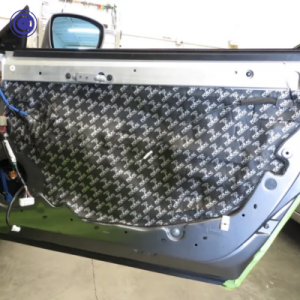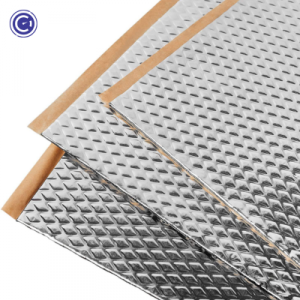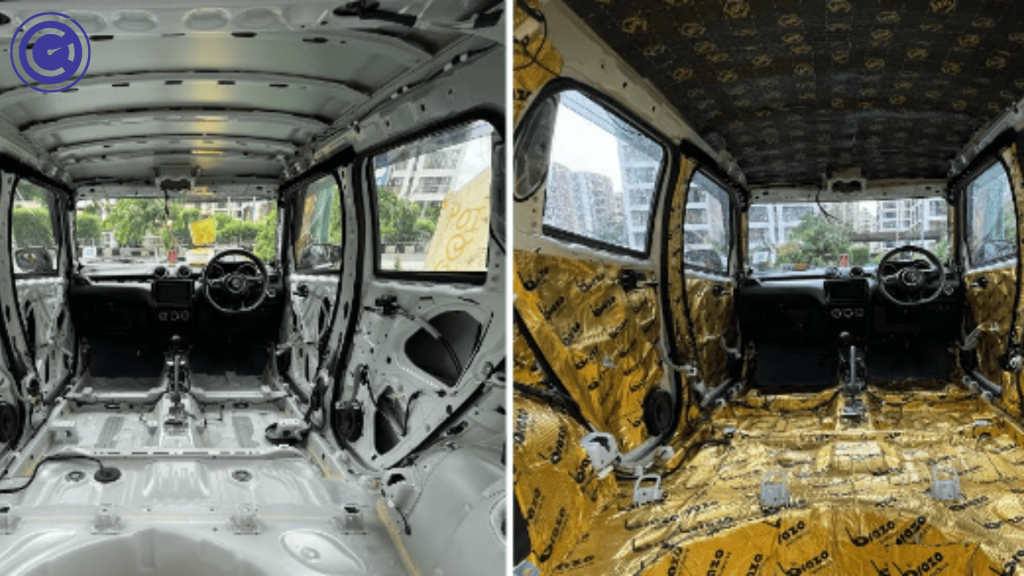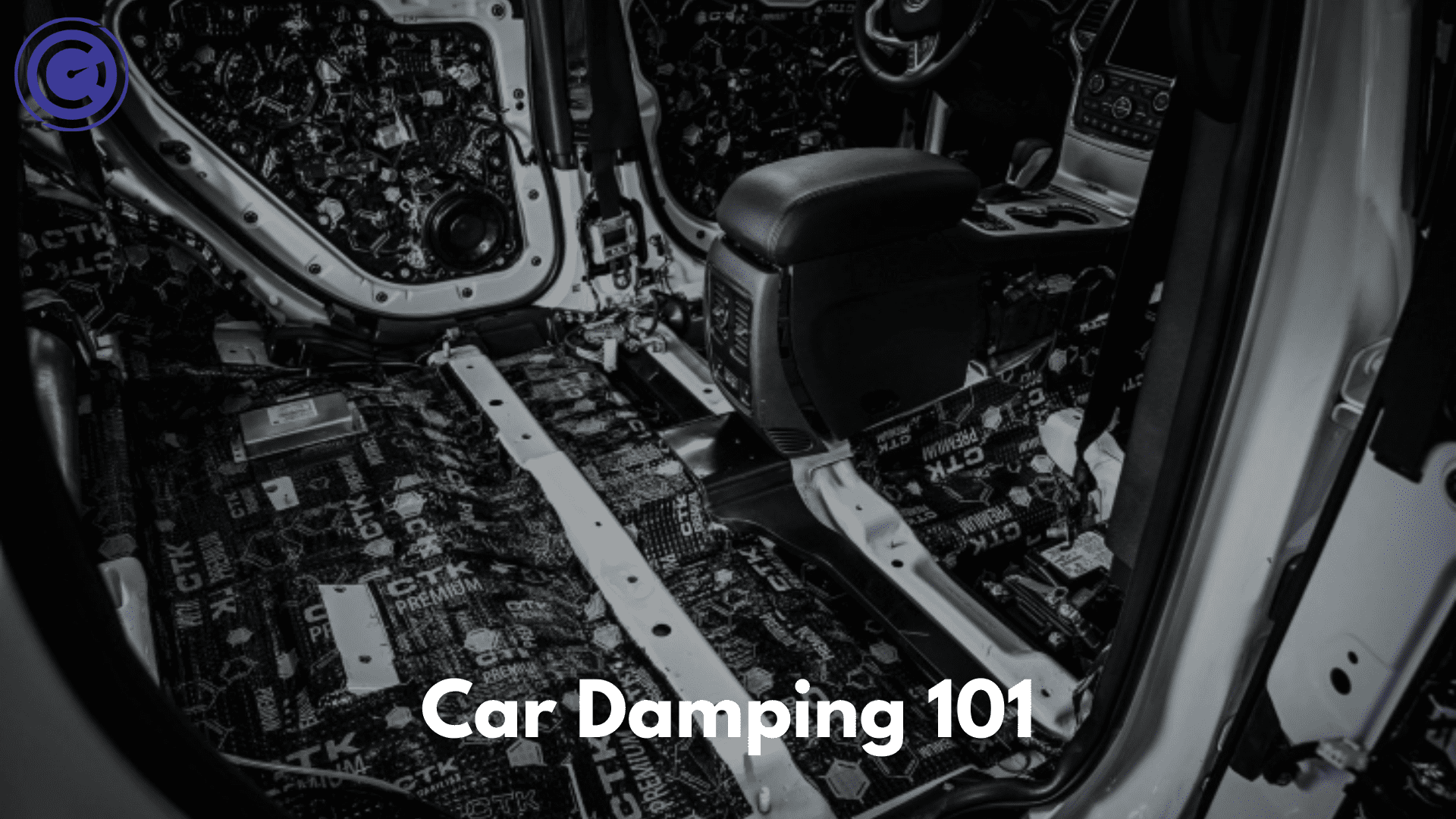For car owners and prospective buyers, car damping is becoming an increasingly popular upgrade. This feature, known for enhancing the driving experience, involves the application of sound-dampening materials in various parts of a vehicle. In this blog, we’ll explore what car damping is, its advantages and disadvantages, and considerations you should make before deciding on this upgrade.
Table of Contents
Introduction to Car Damping
When it comes to enhancing the comfort and quality of your driving experience, one aspect that often goes overlooked is car damping. This automotive feature, growing in popularity among car owners and enthusiasts, offers a significant upgrade to the way you experience your vehicle. Let’s delve into what car damping is and why it’s gaining attention in the automotive world.
What Is Car Damping?

Car damping, a term increasingly familiar among car enthusiasts and owners, refers to the process of reducing vibrations and noise within a vehicle. This is achieved through the application of specialized sound-dampening materials to various parts of the car. The primary goal of car damping is to enhance the overall driving experience by creating a quieter and more serene cabin environment.
Understanding the Basics
Car damping materials are designed to absorb and isolate sound and vibration. When a vehicle is in motion, it generates various noises and vibrations from different sources like the engine, road, wind, and movement of the car’s components. These sounds and vibrations can penetrate the cabin, leading to a less comfortable and noisier ride.
How It Works
The process of car damping involves strategically placing sound-dampening materials in areas where noise and vibrations are most prevalent. Commonly targeted areas include:
- Door Panels: Reducing road and wind noise.
- Floorboards and Carpets: Minimizing vibrations and noise from the undercarriage.
- Engine Bay: Dampening engine noise.
- Trunk Area: Isolating sounds from the rear of the vehicle.
These materials work by absorbing vibrational energy and converting it into negligible amounts of heat, effectively preventing the sound from resonating within the vehicle’s cabin.
Types of Damping Materials

Various types of materials are used for car damping, each with its unique properties and application methods. Some common damping materials include:
- Butyl Rubber Mats: Known for their sound-absorbing properties and are often used in floorboards and door panels.
- Foam Insulation: Helps in both sound absorption and thermal insulation.
- Spray-on Coatings: Provide a versatile way to reach difficult areas and are often used in wheel wells and undercarriages.
The Growing Popularity of Car Damping
In recent years, there has been a noticeable shift towards prioritizing the quality of the driving experience, with car owners seeking more than just performance or aesthetics. Car Damping is a part of this trend, appealing to those who value a serene driving environment. Whether it’s for enjoying music without the interference of external noises, for better concentration while driving, or simply for a more luxurious and comfortable ride, car damping has become a sought-after upgrade for many.
Stay tuned as we explore further into the world of car damping, discussing its benefits, potential drawbacks, and various applications. Whether you’re a long-time car owner or in the market for a new vehicle, understanding the impact of car damping can greatly influence your driving experience and satisfaction.
Advantages of Car Damping

Car damping, a process aimed at reducing noise and vibrations in a vehicle, offers several significant benefits that enhance the driving experience. From improving audio quality to increasing overall comfort, the advantages of car damping are diverse and impactful. Here’s a closer look at the key benefits:
Improved Sound Quality
Reduction of External Noises: By dampening road, wind, and engine noise, car damping makes the cabin quieter.
Enhanced Audio Experience: A quieter interior allows the car’s audio system to perform better, as sounds are clearer and less distorted by external noises.
Enhanced Comfort
- Minimizing Vibrations: Damping materials absorb vibrations from the road and the vehicle’s mechanisms, leading to a smoother ride.
- Stress Reduction: A quieter and more serene cabin environment can reduce driver fatigue and passenger stress, especially on long journeys.
Increased Vehicle Value
- Perceived Quality: A quieter cabin often gives the impression of a higher-quality vehicle.
- Resale Value: Upgrades like car damping can potentially increase a vehicle’s resale value, as it enhances the overall driving experience.
Improved Thermal Insulation
- Temperature Control: Some damping materials also provide insulation, helping to maintain a comfortable cabin temperature by reducing heat transfer.
- Energy Efficiency: This can contribute to more efficient air conditioning and heating, potentially leading to energy savings.
Enhanced Vehicle Rigidity
- Structural Stiffness: Adding damping materials can increase the stiffness of the vehicle’s body, contributing to improved handling and stability.
- Safety Improvement: In some cases, this added rigidity can enhance the vehicle’s safety in the event of a collision.
Personalization and Customization
- Tailored Experience: Car damping allows owners to customize their vehicle to their personal preferences, focusing on areas that matter most to them.
- DIY Friendly: For car enthusiasts, the process of adding damping can be a rewarding DIY project.
Disadvantages of Car Damping
While car damping offers numerous benefits, it’s important to consider its potential downsides. Understanding these disadvantages is crucial for car owners to make an informed decision about whether or not to pursue this modification. Here are some of the main drawbacks associated with car damping:
Cost
- Initial Investment: High-quality damping materials and professional installation can be quite expensive. The cost becomes more significant if you’re looking to dampen a large area or the entire vehicle.
- Maintenance Costs: Over time, damping materials may need maintenance or replacement, adding to the long-term cost.
Added Weight
- Reduced Fuel Efficiency: The additional weight of the damping materials can negatively impact the vehicle’s fuel efficiency. This is particularly notable in smaller cars where weight plays a significant role in fuel consumption.
- Performance Impact: For performance vehicles, the extra weight might slightly affect acceleration and handling dynamics.
Installation Complexity
- Technical Skill Required: Proper installation of damping materials requires a certain level of technical skill. Incorrect installation can lead to issues like material peeling or ineffective noise reduction.
- Time-Consuming: The process can be time-consuming, especially for larger vehicles or more comprehensive damping projects.
Potential for Incorrect Installation
- Risk of Damage: Incorrect installation can lead to damage to the vehicle’s interior, including its electrical systems if not handled properly.
- Compromised Functionality: Poorly installed damping materials might block important vents or access points, leading to other issues.
Limited Impact on Some Noise Types
- Specific Noise Reduction: Car damping is more effective against certain types of noise, like vibrations and engine hum, but less so against others, like tire noise on rough roads.
- Varied Effectiveness: The effectiveness of damping can vary greatly depending on the vehicle type and the quality of materials used.
Aesthetic and Practical Considerations
- Interior Changes: Installation might require the removal and reinstallation of interior panels, which can sometimes alter the original aesthetics or fitment of the vehicle’s interior.
- Access Issues: Damping materials can make accessing certain parts of the vehicle for repairs or upgrades more difficult.
Considerations for Car Damping
Deciding to proceed with car damping involves more than just weighing the pros and cons. It requires careful consideration of various factors to ensure that you make the right choice for your vehicle and your needs. Here are some key considerations to keep in mind:
Assessing Your Needs and Goals
- Identify Key Issues: Determine what specific problems you are trying to address with car damping. Is it road noise, engine vibration, or improving audio quality?
- Driving Habits: Consider how you use your car. Frequent long-distance drivers might prioritize comfort more than urban commuters.
Budget
- Cost Analysis: Have a clear understanding of the costs involved, including materials and potential installation fees.
- Return on Investment: Consider if the benefits of car damping align with the investment. This is particularly important if you have a limited budget.
Choice of Materials
- Quality vs. Cost: Higher-quality materials generally offer better noise reduction but at a higher cost. Research different types of damping materials and their effectiveness.
- Compatibility: Ensure the materials chosen are compatible with your vehicle type and the specific areas you want to dampen.
DIY vs. Professional Installation
- Skill Level: Assess your ability to install the materials yourself. DIY installation can save money but requires a certain skill level.
- Professional Services: If you’re not confident in DIY installation, consider professional services. While more expensive, they offer expertise and a potentially higher quality outcome.
Impact on Vehicle Performance
- Weight Considerations: Understand how added weight from damping materials might affect your vehicle’s performance and fuel efficiency.
- Resale Value: Consider how modifications might impact your vehicle’s resale value, especially if changes are extensive.
Long-Term Maintenance
- Durability: Check the longevity and maintenance requirements of the damping materials. Some may degrade over time or require replacement.
- Access for Repairs: Consider how damping materials might affect access to various parts of your vehicle for future repairs or upgrades.
Research and Reviews
- Product Reviews: Look for reviews and testimonials from others who have used the materials or services you’re considering.
- Expert Opinions: Seek advice from automotive experts or mechanics who have experience with car damping.
Legal and Safety Considerations
- Compliance with Regulations: Ensure that any modifications comply with local vehicle regulations and safety standards.
- Insurance Implications: Check with your insurance provider to understand how car damping might affect your coverage or premiums.
Conclusion
Car damping is a valuable upgrade that can significantly improve your driving experience by enhancing sound quality and comfort. However, it requires careful consideration of costs, potential impact on your vehicle’s performance, and the type of installation. Assessing your needs and driving habits is key to deciding whether this investment is right for you.

